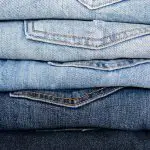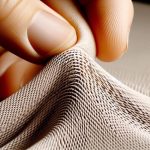Curious about what makes viscose fabric so special?
Viscose, a versatile and vibrant textile, is crafted from natural cellulose fibers, giving it a luxurious drape and smooth, breathable feel. The process involves extracting cellulose from renewable sources, such as wood pulp or bamboo, and then undergoing a chemical transformation to create viscose fibers.
These fibers are then spun into yarn and woven into fabric, resulting in a material that is both soft to the touch and highly absorbent. With its elegant sheen and ability to drape beautifully, viscose fabric is favored for creating flowing dresses, silky blouses, and lightweight scarves.
Delve into the exquisite world of viscose, and discover the magic behind this alluring fabric.
Key Takeaways
- Viscose fabric is crafted from natural cellulose fibers extracted from renewable sources like wood pulp or bamboo.
- The production process of viscose fabric involves dissolving cellulose fibers to create a viscous solution.
- Viscose fabric is soft, breathable, highly absorbent, and has an elegant sheen.
- The production process of viscose fabric has a reduced environmental impact compared to synthetic materials.
The Natural Origins of Viscose
Viscose fabric's natural origins lie in the cellulose fibers of plants such as bamboo and wood. These natural sources make viscose a popular choice for environmentally conscious consumers. The eco-friendly production process of viscose involves dissolving these cellulose fibers to create a thick, viscous solution. This solution is then forced through tiny holes to create fibers that are spun into yarn and woven into fabric. The use of natural sources in the production of viscose reduces the environmental impact compared to synthetic materials. The production process also involves fewer chemicals and energy, further contributing to its eco-friendly reputation.
The use of natural sources not only benefits the environment but also results in a fabric that's breathable, lightweight, and comfortable to wear. This makes viscose an attractive option for clothing, especially in warm weather. Additionally, the versatility of viscose allows it to mimic the look and feel of natural fibers like cotton, silk, and wool, providing a wide range of options for designers and consumers.
Understanding the natural origins and eco-friendly production of viscose fabric can help you make informed choices about the materials in your wardrobe.
The Viscose Production Process
How exactly is viscose fabric produced from its natural sources? The viscose production process involves several key steps that transform cellulose from natural sources into the final fabric. Here's a closer look at what happens during the production of viscose fabric:
- Cellulose Sourcing: Viscose is primarily made from wood pulp, a renewable resource. However, the sourcing of wood pulp should be done sustainably to minimize environmental impact. Look for manufacturers that adhere to sustainable forestry practices and certifications such as FSC and PEFC.
- Chemical Processing: The wood pulp undergoes a chemical process involving carbon disulfide, sodium hydroxide, and sulfuric acid to create a viscous solution. It's crucial for manufacturers to handle these chemicals responsibly to ensure minimal environmental impact and worker safety.
- Spinning and Finishing: The viscous solution is then extruded into a spinneret to form fibers, which are then treated with various chemicals for strength and color. Look for manufacturers that have stringent environmental regulations and prioritize worker safety and fair labor practices throughout the spinning and finishing processes.
Viscose production can have a significant environmental impact and implications for worker safety and labor practices, so it's important to choose products from manufacturers that prioritize sustainability and ethical production methods.
Chemical Transformation of Cellulose
The chemical transformation of cellulose involves the conversion of wood pulp into a viscous solution using carbon disulfide, sodium hydroxide, and sulfuric acid. This process is integral to the production of viscose fabric. Cellulose, the primary component of wood and agricultural waste, undergoes a series of chemical reactions to create the viscose solution. The transformation of cellulose into a soluble form allows for the creation of fibers that are later spun into yarns and woven into fabric.
| Chemical | Function |
|---|---|
| Carbon disulfide | Dissolves cellulose to form xanthate |
| Sodium hydroxide | Converts xanthate into cellulose alkali solution |
| Sulfuric acid | Regenerates cellulose from the cellulose alkali solution |
Understanding cellulose chemistry and the intricacies of fiber transformation is crucial for producing high-quality viscose fabric. By mastering the chemical processes involved, manufacturers can ensure the consistent production of durable and versatile textiles.
Spinning and Weaving Viscose Fibers
Spinning and weaving viscose fibers involves transforming the viscose solution into durable yarns and weaving them into fabric.
The spinning process is crucial in converting the viscose solution into yarn. Firstly, the viscose solution is forced through tiny holes to create strands. These strands are then chemically treated to solidify them into durable and versatile yarns suitable for weaving.
Weaving techniques are essential for creating viscose fabric with different textures and patterns. The yarns are interlaced using various weaving methods such as plain weave, satin weave, or twill weave to achieve different fabric properties. Each technique results in a distinct look and feel of the fabric, offering a wide range of options for designers and consumers.
Understanding the spinning process and weaving techniques empowers you to appreciate the craftsmanship behind viscose fabric and enables you to make informed choices when selecting and caring for viscose garments.
Properties and Uses of Viscose Fabric
When working with viscose fabric, you can appreciate its unique properties and versatility, making it a popular choice for a wide range of uses. Viscose fabric has a silky appearance and drapes beautifully, giving it a luxurious feel. It's breathable, lightweight, and absorbs moisture well, making it comfortable to wear in warm weather. Additionally, viscose fabric has good dye retention, allowing for vibrant and long-lasting colors. These characteristics make it an excellent choice for clothing such as dresses, blouses, and summer wear, where a soft and flowing drape is desired.
The advantages of viscose fabric extend beyond its use in clothing. Due to its absorbency and breathability, it's also commonly used in linings, scarves, and interior furnishings. Additionally, its versatility lends itself well to blending with other fibers, enhancing the properties of the resulting fabric.
However, it's important to note that while viscose fabric has many desirable characteristics, its production process involves the use of wood pulp, which raises environmental concerns. As a conscientious consumer, it's worth considering the environmental impact when choosing viscose fabric and looking for sustainably sourced alternatives.
Frequently Asked Questions
What Are the Environmental Impacts of Viscose Production?
When considering the environmental impact of viscose production, it's crucial to explore sustainable alternatives. Understanding the implications of viscose on ecosystems and communities can guide the shift towards more eco-friendly fabric production methods.
Are There Any Alternative Uses for Viscose Fabric Outside of Clothing?
Viscose fabric has versatile uses beyond clothing. In home decor, it's great for draperies and upholstery. In industrial applications, it's used for non-woven products like wet wipes and medical gauze.
Can Viscose Fabric Be Recycled?
Yes, viscose fabric can be recycled, offering sustainability benefits. Recycling options include repurposing into new textiles or converting into other products. This process helps reduce waste and supports a circular economy for textiles.
What Are the Care Instructions for Viscose Fabric?
To maintain viscose fabric, wash it on a gentle cycle with cold water and mild detergent. For stain removal, spot treat with a gentle stain remover. Iron on low heat with a cloth between the fabric and iron.
Are There Any Potential Health Concerns Associated With Wearing Viscose Fabric?
Wearing viscose fabric may pose potential risks due to chemical exposure. Some individuals may experience skin irritation or allergic reactions. It's important to be mindful of these concerns and consider proper care when wearing this fabric.
- Tetron Fabric for Marine Applications: Durability and Use Cases - June 18, 2025
- Tetron Fabric for Outdoor Furniture: Weather Resistance and Care - June 18, 2025
- Tetron Fabric for Wall Coverings: Style and Application Tips - June 18, 2025





